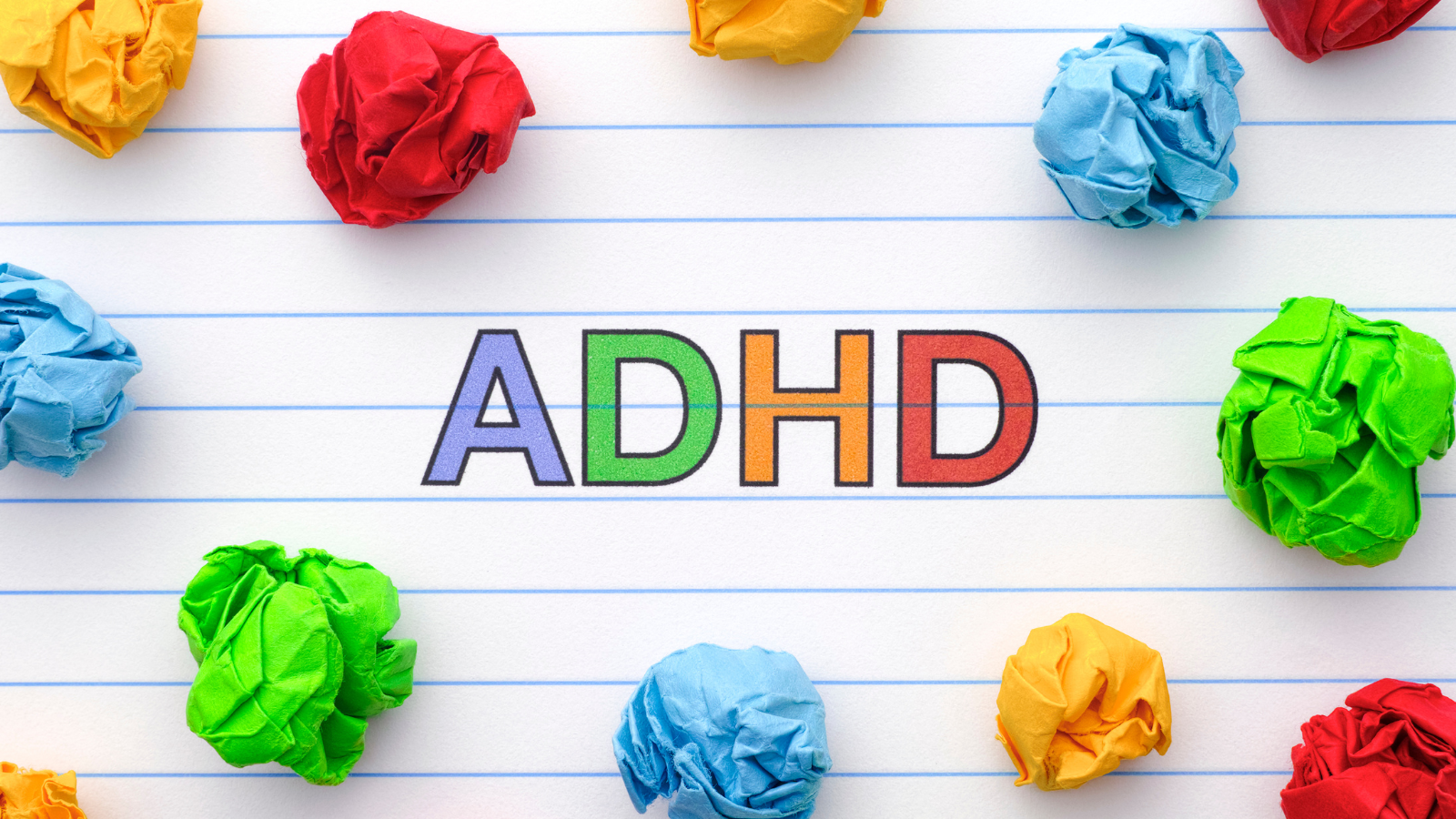ADHD Facts and Resources to Better Serve Your Students

ADHD—or, attention-deficit/hyperactivity disorder—is the most common developmental condition in children, with 9.8 percent of children aged 3-17 receiving a diagnosis. But despite how common ADHD is in society, there have been myths and misinformation circulating about the neuro-behavioral condition.
In classrooms, the majority of students with learning disabilities - nine out of 10 - receive school support, particularly in the areas of special accommodations or classroom assistance. That number shrinks to six out of 10 when it comes to supporting students in need of individual behavioral/skills training, which is necessary to help children with ADHD. It is important that all school districts and educators actively work to provide an equitable experience for their students with ADHD.
To best understand the needs of students with ADHD, it is important to understand the facts, disprove the myths and provide enriching resources that cater to neurodiverse learners. Below, we’ve gathered up some important ADHD facts, addressed some common myths and provided helpful classroom resources.
ADHD facts
If you’re seeing more information coming out about ADHD, that’s because doctors and scientists are continually learning about the relatively new disorder. While ADHD symptoms were discussed in the early 1900s, the disorder was not officially named until 1987. This is why you see generations like millennials, Gen Z and Gen Alpha with ADHD diagnoses more than you see in baby boomers and Gen X. In fact, a 2022 Blue Cross Blue Shield report found that millennials have higher prevalence rates for nearly all of the top 10 conditions (including ADHD) than did Generation X members when they were in the same age range (age 34-36).
We are now at a point culturally where we have 35 years of scientific research gathered, with new breakthroughs happening and more information accessible than ever. With ADHD awareness and information gaining more attention from our society, it has been easier for the facts to reach the surface.
Below, we highlight some of those facts about ADHD that help fight misinformation.
Boys are more than twice as likely as girls to be diagnosed with ADHD
In childhood, 13 percent of boys are diagnosed with ADHD, compared to six percent of girls. Likewise, the diagnosis rate in adult men is 5.4 percent, while the rate for adult women is 3.2 percent.
The diagnosis gender gap is because ADHD symptoms often show up differently between males and females. Males with ADHD are more likely to exhibit hyperactivity symptoms, while females with ADHD have more quiet and nuanced symptoms that are easier to miss. A 2019 report studied the diagnosis gender gap and found that males have higher inattention scores - a symptom that is easily spotted.
“At the population level, males had higher scores for all symptom domains (inattention, hyperactivity/impulsivity, conduct, and learning problems) compared to females, but similar severity was seen in clinically diagnosed males and females,” the report’s authors write.
As science uncovers ADHD’s more nuanced symptoms and doctors get better at recognizing them, the diagnosis gender gap begins to get smaller.
ADHD in adults is underreported
The biggest reason experts suspect underreported adult diagnoses is because agnostic criteria for ADHD were initially developed for children. Now that we understand that children can have ADHD well into adulthood, adults are being diagnosed with ADHD at four times the rate children are being diagnosed. Males being diagnosed at a higher rate than females has also contributed to underreported adult diagnosis.
“Women were underdiagnosed for many years, and that's the group where we see the greatest increase in diagnosis,” Dr. Julie Schweitzer, professor of psychiatry & behavioral sciences at UC Davis, told ABC10.
With more information available about ADHD symptoms and how they show up differently for different people, women who flew under the radar as children are now making connections between ADHD and certain behaviors they possess and, as a result, are seeking out a diagnosis. As more adults seek a diagnosis, it is possible that fewer adults will be underreported in the future.
Adults with ADHD are likely to have a secondary disorder
“Comorbidities” are when two or more conditions are present in a patient. For people with ADHD, it is common for the disorder to co-occur with other mental health conditions. Around 20-40 percent of individuals with bipolar disorder also have ADHD and 5-7 percent of people diagnosed with ADHD will be diagnosed bipolar sometime in their lives. Personality disorders in general are present in more than 50 percent of adults with ADHD.
Most interesting is how the disorders show up based on the ADHD subtype, of which there are three. (We will get into those later.) Patients with the combined subtype - which includes symptoms of hyperactivity, impulsivity and inattentiveness - reported higher rates of antisocial disorder, bipolar disorder, lifetime conduct disorder, major depression, psychosis and substance dependence. This proves that individuals with ADHD experience the disorder differently depending on their subtype and potential for comorbidities.
There has been a 42 percent increase in ADHD diagnoses in the past eight years
Our culture has learned a lot about ADHD recently. The disorder we know now is much different than the disorder we knew in the 1990s. As experts discover more about ADHD, it becomes more recognizable in those who are undiagnosed.
Social media has also helped connect diagnosed individuals with undiagnosed individuals. On TikTok, the ADHD hashtag has more than 11 billion views, while the r/ADHD subreddit went from 643,000 subscribers in March 2020 to 1.4 million subscribers as of summer 2022. The increased social media connections and conversations around ADHD show that younger audiences are exploring other people’s experiences with ADHD and connecting them with their own.
Between 2007 and 2016, reported incidences of adult ADHD rose 123 percent. Likewise, the CDC found that “By 2011, 6.4 million children were reported by their parents to be diagnosed by a health professional with ADHD compared to 4.4 million in 2003.”
It’s not that ADHD is becoming an epidemic, it’s that scientists, doctors and undiagnosed individuals did not have the information - or access to information - they have today.
ADHD myths
For decades, ADHD has had stereotypes and hurtful misinformation attached to it. Media often portrays characters with ADHD as aloof and always getting distracted by something shiny—or, if you are a fan of Disney’s Up, a squirrel.
There are even misconceptions in how we communicate. “I’m having an ADHD moment” is a common yet harmful phrase that has been normalized and simplifies the disorder down to getting distracted easily. And while distraction is an ADHD symptom, it is not representative of the entire disorder.
Below are some more myths about ADHD that we’ve cleared up.
ADHD is only in children
The average diagnosis happens at seven years old, which is why we often think of children when discussing ADHD. Adults are fully capable of being diagnosed with ADHD, and children with ADHD often manage the disorder well into adulthood.
Another reason why this myth exists is because there is a decreasing ADHD prevalence found in adulthood. Roughly 3-5 percent of adults live with an ADHD diagnosis, compared to 9.4 percent of children living with ADHD.
And while five percent of the adult population seems small, think of it this way: Eight million adults - enough people to fill 152.5 Rutgers Football Stadiums - have been diagnosed with ADHD in their lifetime.
People with ADHD can’t concentrate
People with ADHD are actually really, really good at concentrating. However, if they view the task or responsibility as boring, that’s where concentration becomes challenging.
Hyperfocus is one of ADHD’s many symptoms and can be a positive one when understood correctly. Think of what it’s like getting wound up in a good book or television show. That sharp attention and sudden loss of time is what someone with ADHD experiences regularly with any tasks, activities or topics of interest.
The myth that people with ADHD can’t concentrate exists because the hyperfocus symptom is quiet. A person is focused only on themselves and what’s in front of them. When a person living with ADHD is bored by a task, project or topic, they exhibit more obvious side effects like fidgeting or making careless mistakes - something that is more visible in the classroom.
For educators, this means understanding the ways their students with ADHD learn best and connecting them with materials and resources that cultivate excitement toward a topic.
ADHD is an over-diagnosed condition
ADHD diagnoses have increased over time, which is why this myth exists. What is important, though, is there are many numbers that make up this story. If you remember from the “ADHD facts” section, the disorder was named only 35 years ago. Since then, there has been a lot of research that tells us more about ADHD and how it shows up.
As doctors learn more about ADHD, how it interacts with other disorders and its nuanced side effects, they are better able to confidently diagnose patients. Likewise, as undiagnosed individuals start to understand what to look for, they can seek diagnosis quickly.
People with ADHD are hyper
Hyperactivity is just one of many potential ADHD symptoms, and it is possible for someone with ADHD not to have hyperactivity at all.
In fact, there are three types of ADHD:
Predominantly inattentive presentation
This type of ADHD shows up in inattentiveness. Traits include trouble with organization, careless mistakes, forgetfulness, trouble with following through and trouble listening, to name a few. A person with this type of ADHD is not typically considered “hyper.”
Predominantly hyperactive/impulsive presentation
The “hyper” stereotypes are rooted in this type of ADHD, which has the better-known traits of fidgeting or excessive talking. In addition to the hyperactivity symptoms, a person with this type of ADHD may also face challenges with impulse - interrupting, difficulty waiting their turn or finishing someone’s sentence, for example.
Combined presentation
When a person exhibits traits of the two above ADHD types, they have a combined presentation.
Classroom resources
Knowing the facts about ADHD is one step toward providing students with the disorder a safe and enriching classroom experience. To further provide for your students with ADHD, we’ve rounded up some free online resources below.
This magazine is a great resource for understanding ADHD and ADHD awareness. It also provides a section on its website for educators. On the page, ADDitude lists strategies, outside resources and tips for educators that work with students diagnosed with ADHD.
ADHD Resource Guide for Current and Future College Students
Navigating college life with ADHD can be both exciting and challenging. Whether you’re a student looking for practical tools, an educator seeking to better support neurodivergent learners, or an organization hoping to raise awareness, we hope you find some help here. This collection brings together trusted, research-based, and community-driven ADHD resources from across the web.
The Centers for Disease Control and Prevention gives educators an overview of how to help students with ADHD succeed in school. On the page are tips for communication, accommodations, working with parents and more, as well as links to outside resources.
The organization that supports adults and children with ADHD offers a teacher training program crafted by teachers that gives practical strategies and resources to educators working with students with ADHD. Additionally, CHADD offers various toolkits for parents, educators and caretakers that interact with children that have ADHD.
This website offers print-ready and digital resources for the classroom, including resources that specifically cater to students with ADHD. Browse dozens of resources and references that each tackle a different aspect of ADHD.
XQ was founded to encourage educators to rethink the high school experience so that every student graduates ready to succeed in life. Part of that mission includes helping educators better understand life and learning with ADHD. A dedicated page offers information, strategies and tips for helping students with ADHD achieve success.
If you’re considering following your dream of teaching, Rutgers Alternate Route can offer you the support and training you need to succeed. Be sure to follow Rutgers Alternate Route on Twitter and sign up for Alternate Route’s monthly newsletter for more information and stories from the field of education.

 Lindsay Patton is a digital communications professional who specializes in social media, writing, digital marketing, e-commerce, podcasting and other content-focused endeavors. Since 2019, she has assisted Alternate Route with its marketing strategy to help the program reach new audiences. As a result of this collaboration, Alternate Route has introduced Lindsay to many of New Jersey's talented educators, who have had a direct influence on her own classroom strategies as an adjunct professor. She is grateful for the opportunity to create meaningful content that helps increase equity within classrooms and is inspired by Alternate Route's hardworking team.
Lindsay Patton is a digital communications professional who specializes in social media, writing, digital marketing, e-commerce, podcasting and other content-focused endeavors. Since 2019, she has assisted Alternate Route with its marketing strategy to help the program reach new audiences. As a result of this collaboration, Alternate Route has introduced Lindsay to many of New Jersey's talented educators, who have had a direct influence on her own classroom strategies as an adjunct professor. She is grateful for the opportunity to create meaningful content that helps increase equity within classrooms and is inspired by Alternate Route's hardworking team. 





